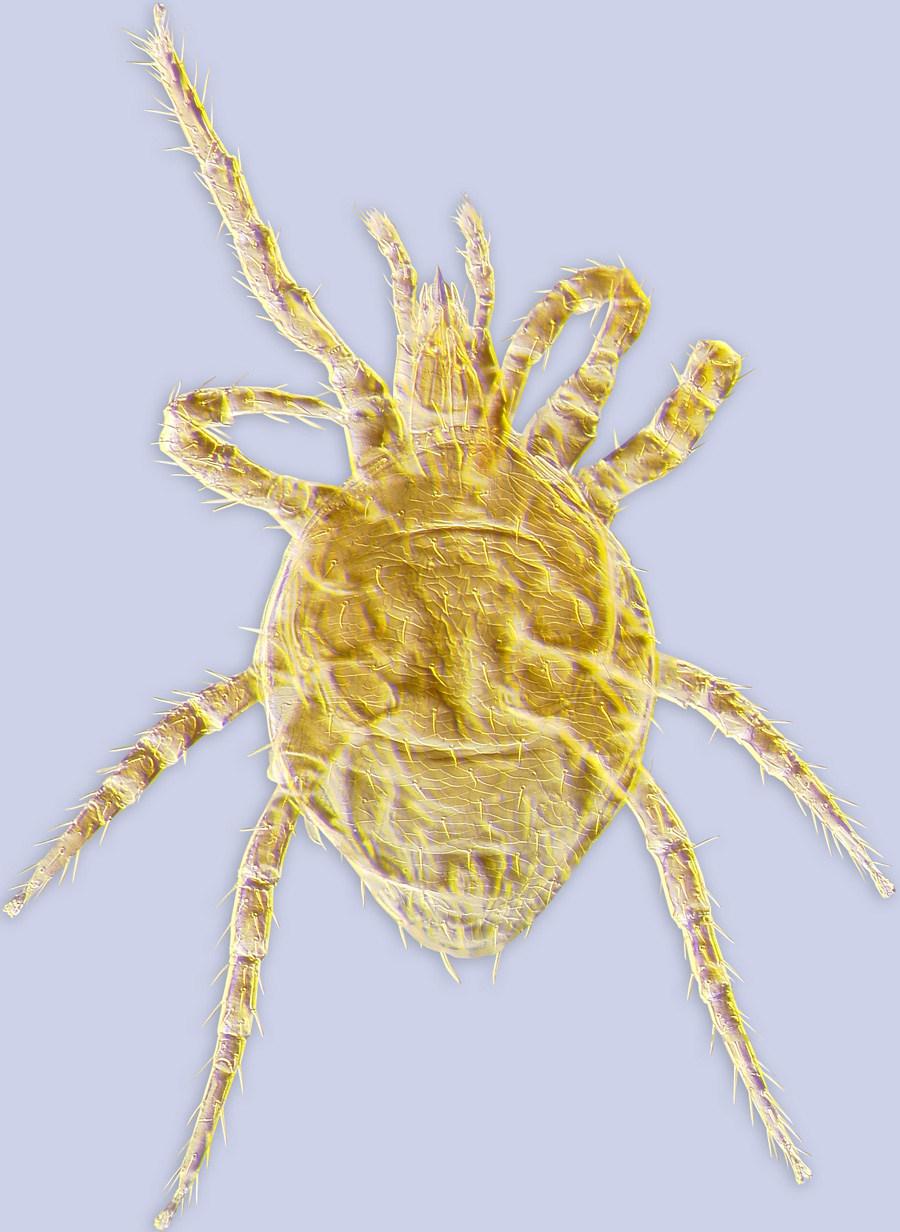Bee Mites : Acari : Parasitiformes : Mesostigmata : Laelapidae : Laelaspoides
Laelaspoides ordwayae Eickwort, 1966
Laelaspoides ordwayae Eickwort, 1966: 411, Figs 1-23.
Laelaspoides ordwayi Walter et al., 2002: 146 (unjustified emendation).
Material. 1 female - COSTA RICA: Guanacaste Prov., 24 km NW Canas, Inter-American Hwy., Hacienda Comelco 50 m, ex Caenaugochlora costaricensis (Friese, 1919) (Hymenoptera: Halictidae), 14 Oct 1971, E. R. Heithaus, CUIC BMOC 80-0723-003 (tentative identification).
Hosts.Augochlorella striata (Provancher, 1888)
Augochlorella persimilis (Viereck, 1910)
Distribution. USA: Kansas
Biology. To date, Laelaspoides ordwayae is known in associations with two ground-nesting bee species, Augochlorella striata (Provancher, 1888) and Augochlorella persimilis (Viereck, 1910) in Kansas. The mites in all stages, except for larvae, are abundant in the nest cells of the bees and are encountered more rarely in the cell cluster cavity of the nests. Probably the larval period is short and the larvae moult into protonymphs soon after hatching, or that the mite is nymphiparous, passing the larval stage within the female. After the hibernation, and before the bees start to build nests, the mites disperse on bees via phoresy, holding primarily onto the hairs of the host. The mites probably enter the nest cells as they are being provisioned, reproduce there, then leave the cells as the young emerging bees open them, and enter other cells as they are provisioned. The mites eat pollen and apparently do not harm the bee larvae (Eickwort, 1966).
References
Image Gallery
B. OConnor and P. Klimov ©
Created: April 22, 2012
Last modified: 

